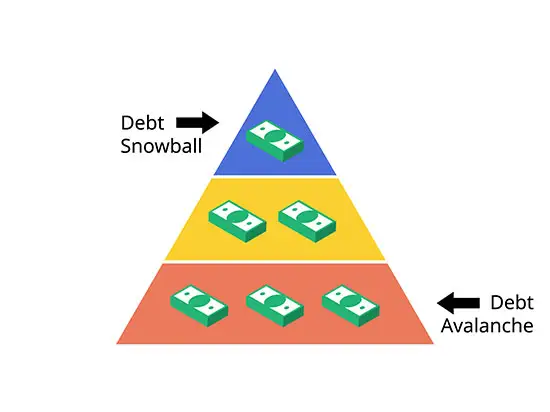Debt Snowball vs. Debt Avalanche

hese may sound like ways of coping with the cold, but these are actually two polar opposite methods of paying down your debts. Which one is right for you?
Debt Snowball Method
Using the Debt Snowball method means you would pay off your credit cards or loans by focusing on paying off the lowest balance first by paying more than the minimum payment each month, while also paying just minimum towards the rest, and continuing to pay off the lowest until you are debt free. This method helps those of us that need gratification. There is a certain sense of accomplishment that comes with having one of your debts knocked off the list. Once you see that more and more of your debts are being paid off, you might feel more motivated to keep paying them off. Perhaps, you will even be inspired to pay off more than you normally would just to get the next debt off the list. This is a good option if you need a 'win' in the world of debt, but this method will take longer and cost you more in the long-run because of the interest that is accruing on your larger debts while you pay off your smaller ones.
Debt Avalanche Method
The Debt Avalanche method consists of focusing on paying off your debts with the higher interest rates first while paying the minimum on the rest. Research which debt has the highest interest rate, and pay more than the minimum payment on it until it is completely paid off. This way you can save money, because you're allowing less interest to accrue on your larger debts and thusly less compounding interest accrues. Depending on how much you have to pay off, you could actually be saving hundreds or even thousands of dollars by getting rid of those high-interest debts as soon as you can. This will also help you pay your debts faster, because the interest won't be prolonging the 'life' of the debt. This method may feel like it's more drawn-out during the process, but you'll actually be paying off your debts faster than you think, and you'll be paying less because you won't have that compounding interest adding up.
What Should I Do?
Sit down and do the math. List all of your debts, the balance owed, the minimum payment, and the interest rates involved with each one. What does the list look like if you organize it by balance for the Debt Snowball method? Now, organize it by the interest rates for the Debt Avalanche method. Take a look at what debts would get paid off, and how long the other debts would take if you were only paying the minimum. How long will it take to pay off your debts?
If it's longer than five years, you might want to seek the help of a professional. Research non-profit companies that offer a debt relief program, such as debt consolidation through a debt management program (often called credit counseling). Many times, these companies have relationships with creditors that allow them to greatly reduce your interest rates by joining their program. Click here to find out more about selecting the right counseling agency for you.
These two methods are not mutually exclusive! You can use a combination of the two methods; consider paying off your smallest debt first to get that sense of accomplishment that many people in debt are anxious to experience, and then focusing on the high interest debts immediately afterwards.
Whatever you decide, keep at it!
